ch 53, Invertebrates: Ecdysozoans and Their Characteristics, Ecology and the Biosphere: Species Distribution Factors, Chordates: Key Characteristics and Evolutionary Groups
1/91
There's no tags or description
Looks like no tags are added yet.
Name | Mastery | Learn | Test | Matching | Spaced |
|---|
No study sessions yet.
92 Terms
population ecology
The study of populations in relation to the environment, including environmental influences on population density and distribution, age structure, and variations in population size.
The three Ds of population ecology
density, dispersion, demography
density
density is dynamic, it changes. Birth and immigration increases diversity while death and emigration decreases diversity
Sampling techniques
estimate densities and total population sizes. Estimations: extrapolation (from small samples) and mark and recapture
dispersion
the pattern of spacing among individuals within the boundaries of the population. environmental and social factors influence this
Three types of dispersion
clumped, uniform, random
demography
study of vital statistics of a population and how those statistics change over time. Birth rates- reproductive rates, death rates- survivorship
life table
an age-specific summary of the survival pattern of a population
survivorship curve
Graph showing the number of survivors in different age groups for a particular species.
three types of survivorship curves
Type I: individuals live a long life until an age is reached where the death rate increases rapidly.
Type II: individuals have a death rate that is roughly constant across all ages.
Type III: individuals have a steep downward curve for those of young age that flattens out as they get older.
two growth models
exponential and logistic
exponential growth
Growth pattern in which the individuals in a population reproduce at a constant rate
limits to growth
The argument that both world population and world economy may collapse because available world resources are inadequate.
carrying capacity
Largest number of individuals of a population that a environment can support
limiting factors
Any biotic or abiotic factor that restricts the existence, numbers, reproduction, or distribution of organisms.
logistic growth
Growth pattern in which a population's growth rate slows or stops following a period of exponential growth
Ecdysozoans
Group including Nematodes and Arthropods.
Cuticle
Tough coat that is shed during ecdysis.
Ecdysis
Process of shedding the cuticle.
Nematoda
Phylum of roundworms, ubiquitous in habitats.
Pseudocoelomates
Organisms with a body cavity not fully lined.
Alimentary canal
Digestive tract found in Nematodes.
Detritivores
Organisms that feed on decomposing organic matter.
Heartworm
Parasite affecting dogs, a type of nematode.

Tardigrada
Phylum of water bears, survive extreme conditions.
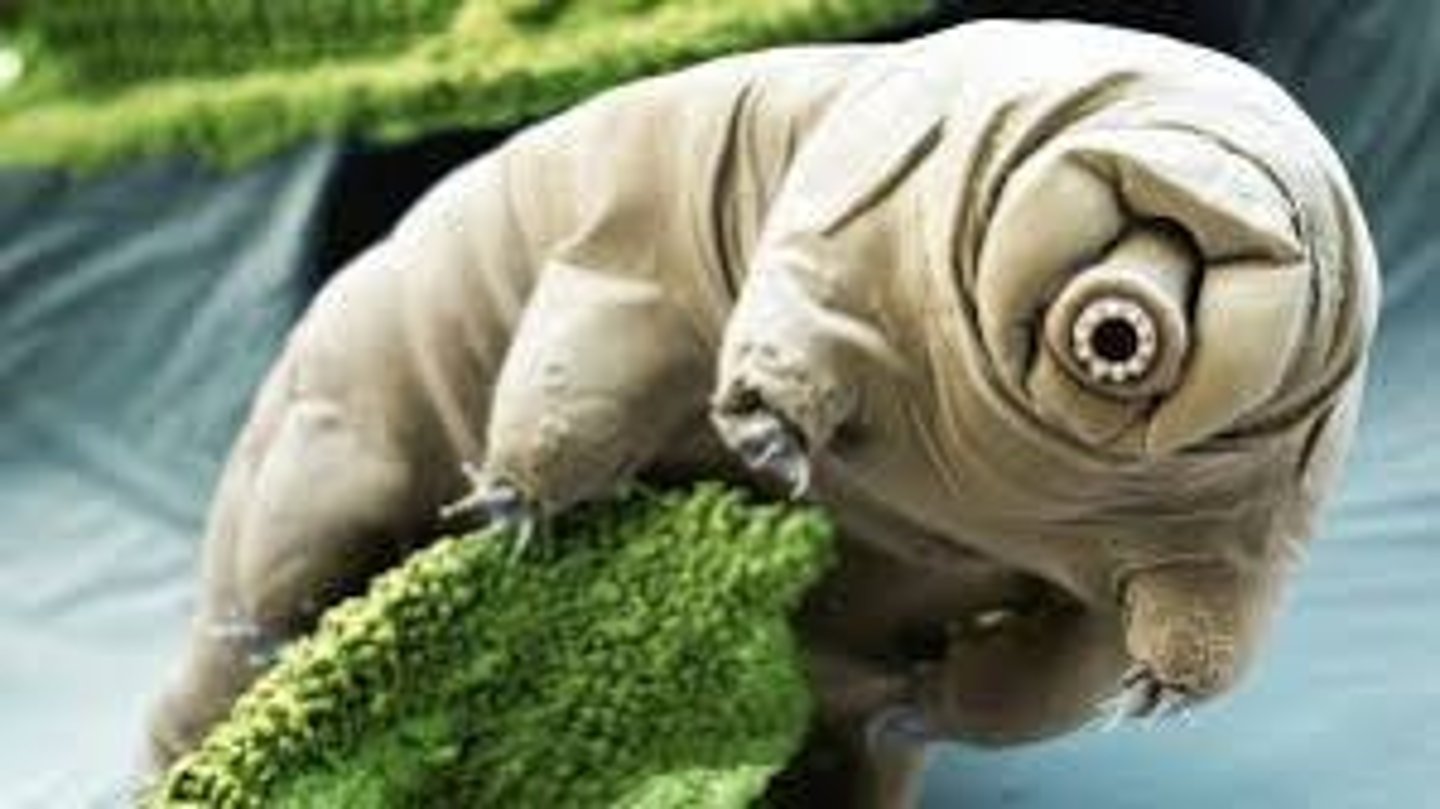
Omnivores
Organisms that eat both plants and animals.
Arthropoda
Phylum with segmented bodies and jointed appendages.
Exoskeleton
Hard outer structure providing support and protection.
Cephalothorax
Body region combining head and thorax in arthropods.
Tracheal system
Air ducts for gas exchange in terrestrial insects.
Chelicerates
Group with claw-like feeding appendages, includes arachnids.
Myriapods
Group including centipedes and millipedes.
Centipedes
Carnivorous myriapods with one pair of legs/segment.
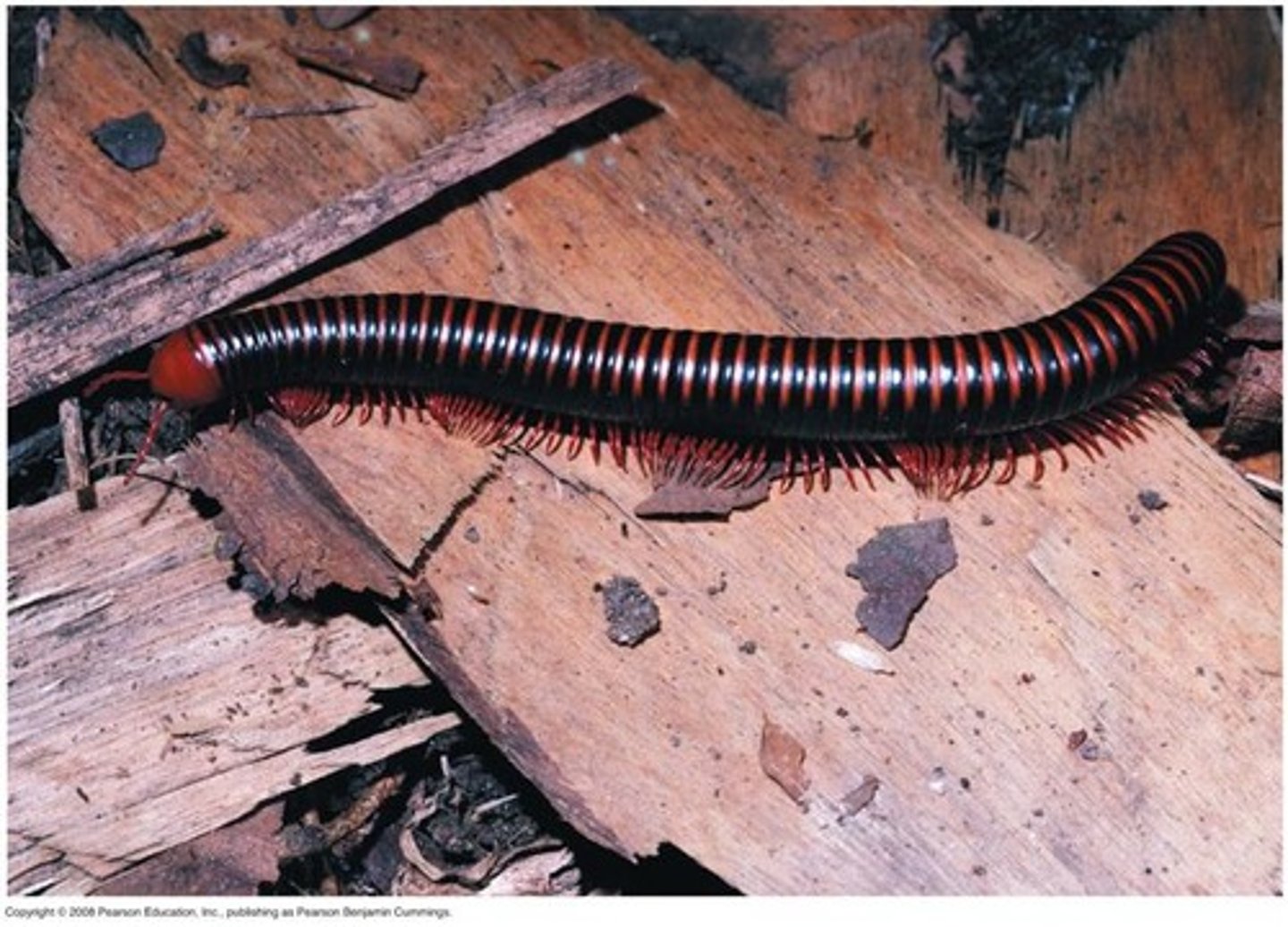
Millipedes
Herbivorous myriapods with two pairs of legs/segment.

Isopods
Crustaceans like pill bugs, often terrestrial.
Decapods
Crustaceans with ten limbs, including crabs and shrimp.
Echinodermata
Phylum including sea stars and sea cucumbers.
Water vascular system
Hydraulic system for movement in echinoderms.
Chordata
Phylum including vertebrates and some invertebrates.
Deuterostomes
Organisms where anus forms from blastopore.
Ecology
scientific study of the interactions between organisms & the environment
Population
group of individuals of the same species living in an area
Community
group of populations of different species in an area
Ecosystem
the community of organisms in an area and the physical factors with which they interact
Landscape
a mosaic of connected ecosystems
Biosphere
the global ecosystem, the sum of all the planet's ecosystems
Organismal ecology
studies how an organism's structure, physiology, and (for animals) behavior meet environmental challenges
Population ecology
focuses on factors affecting population size & diversity
Community ecology
deals with species interactions in a community
Ecosystem ecology
emphasizes energy flow and chemical cycling among the biotic and abiotic components
Landscape ecology
deals with adjacent ecosystems and how they are arranged in a geographic region
Global ecology
examines the influence of energy and materials on organisms across the biosphere
Dispersal
movement of individuals away from their area of origin
Biogeography
past & present species distribution; a good starting point
Biotic factors
living factors that affect species distribution
Abiotic factors
nonliving factors that affect species distribution
Saguaro cactus distribution
influenced by biotic factors like grazers, pollinators, pathogens and abiotic factors like temperature, moisture & water availability
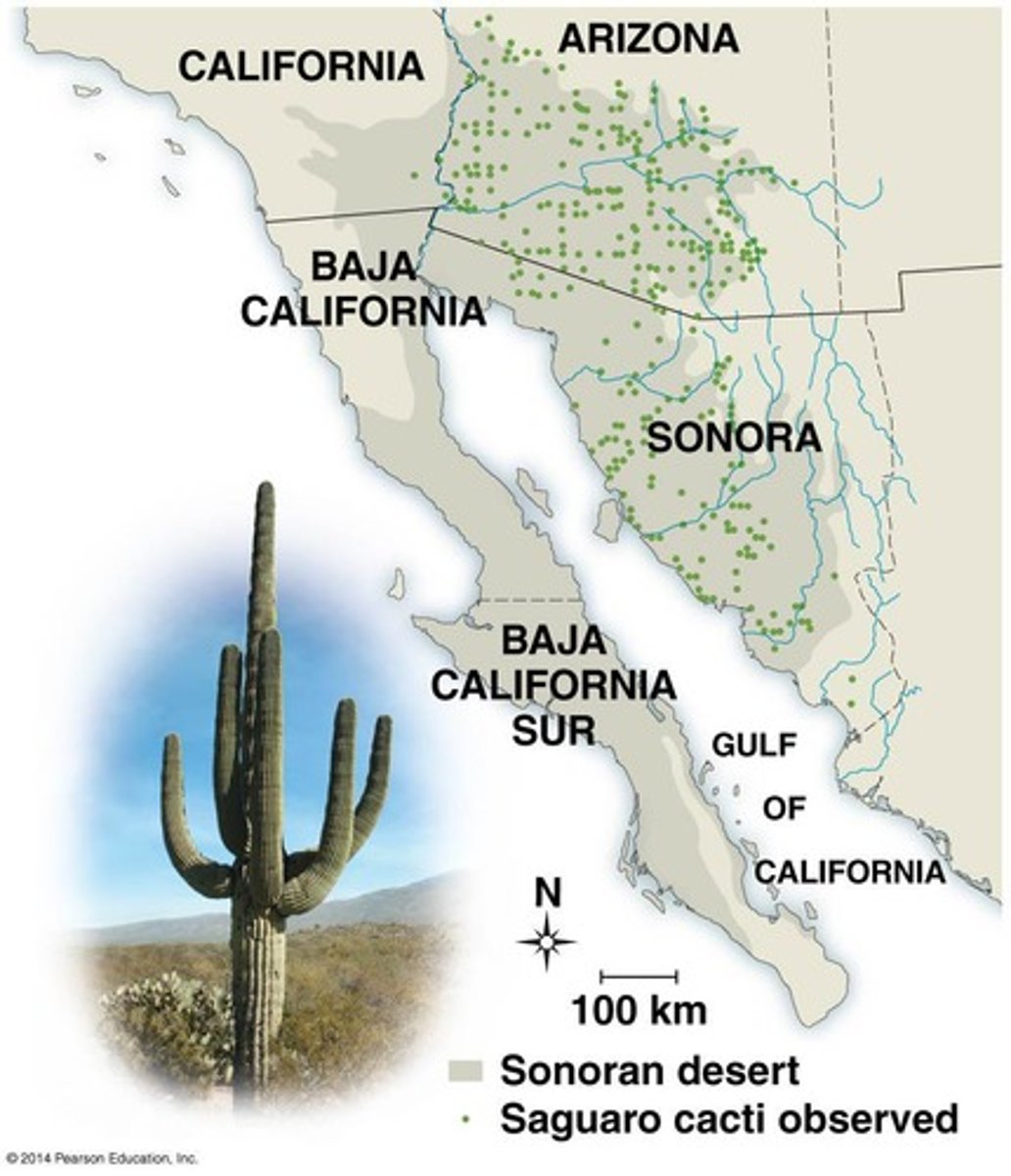
Transplants
organisms intentionally or accidentally relocated from their original distribution
Invasive species
transplants that negatively impact native species in their new location
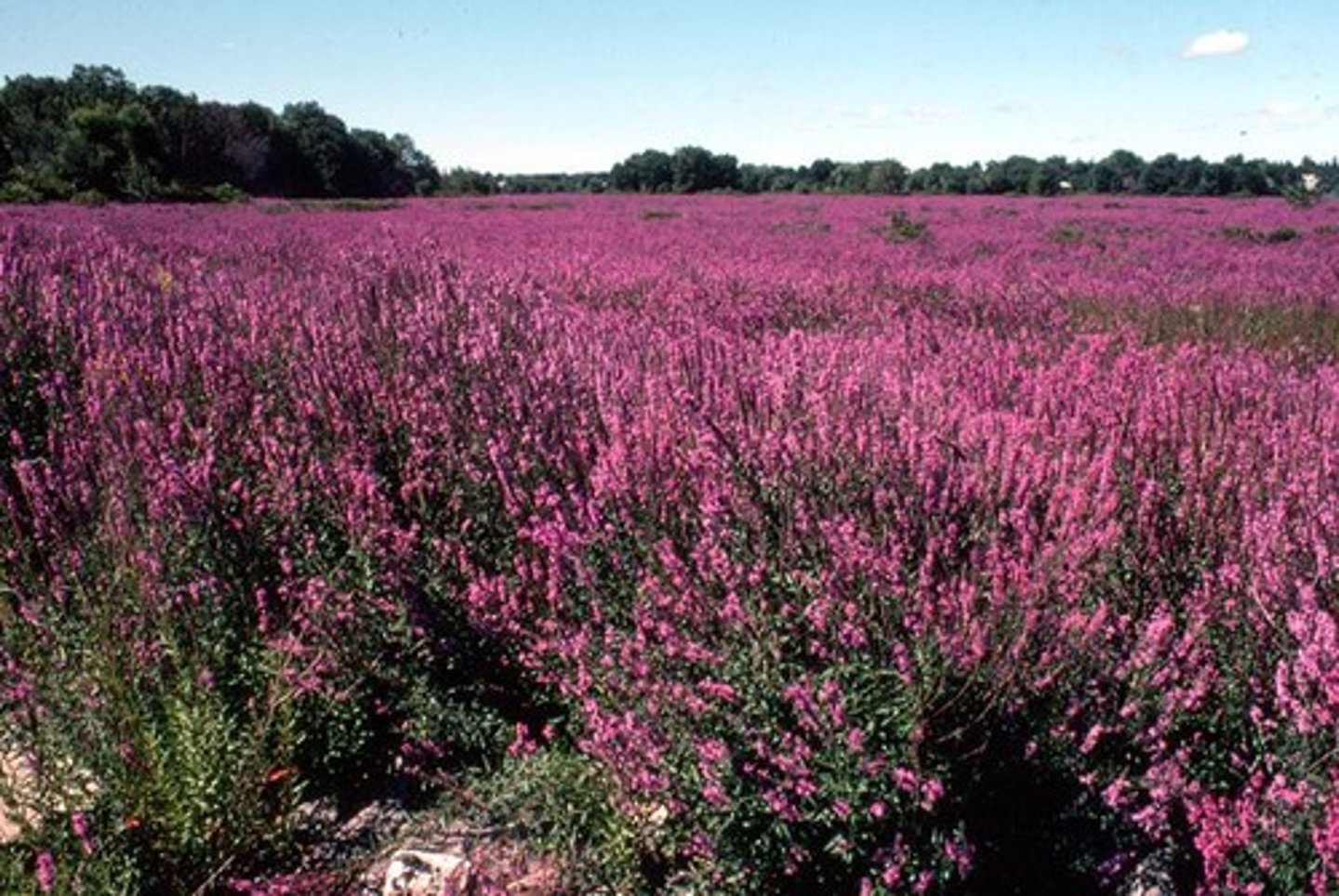
Accidental introductions
species introduced unintentionally, often referred to as 'hitchhikers'
Intentional Introductions
species introduced deliberately for purposes such as food, medicine, or landscaping
High reproduction rates
characteristic of invasive species that allows them to proliferate quickly
Chemical warfare (allelopathy)
the production of chemical compounds by plants that can inhibit the growth of other plants
Enemy release
when an invasive species escapes from its natural enemies, allowing it to thrive
Chordate
Animals with a notochord, dorsal nerve cord.
Notochord
Flexible rod providing structural support in chordates.

Dorsal nerve cord
Hollow tube developing into the central nervous system.
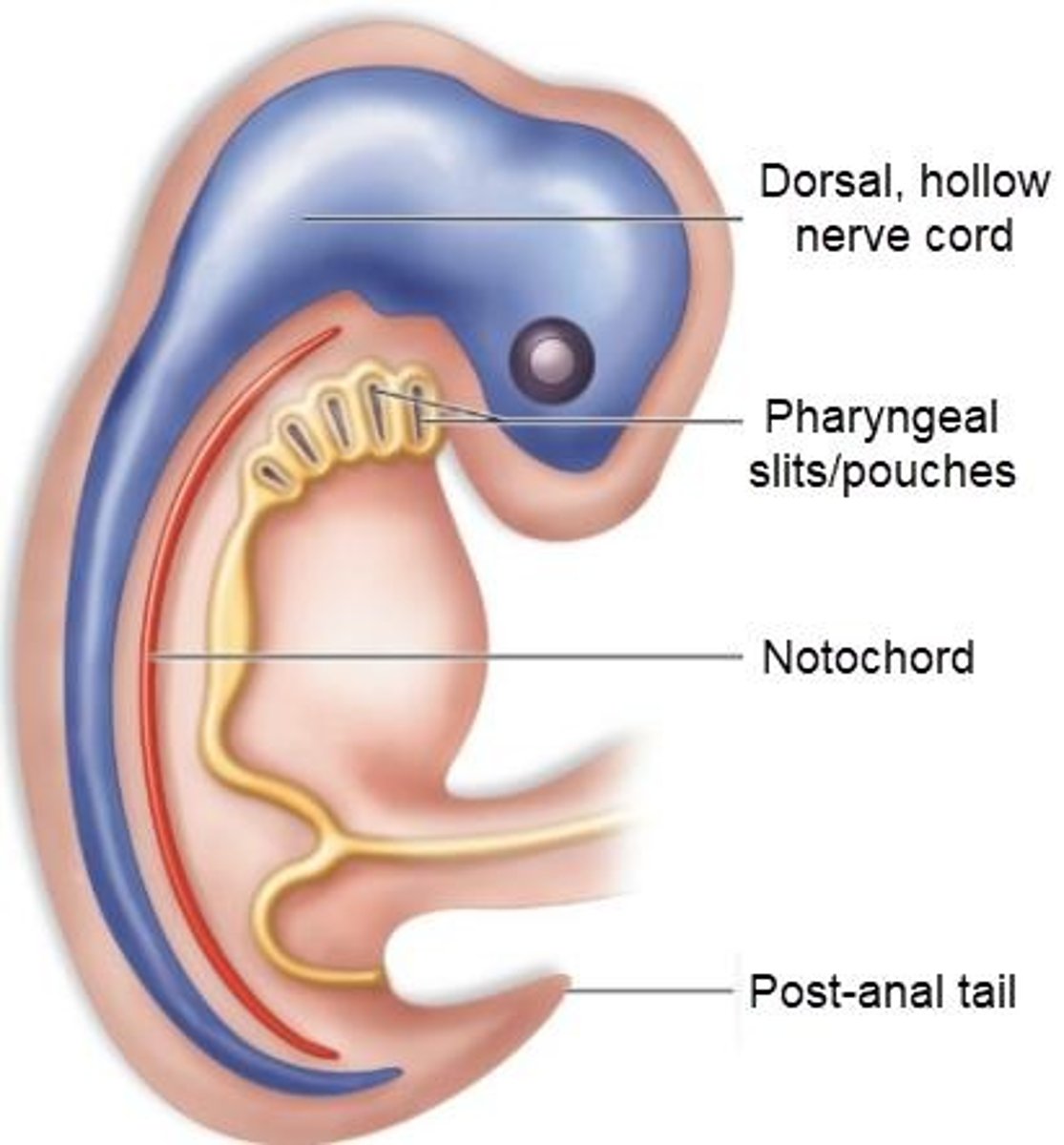
Pharyngeal slits
Grooves in pharynx for gas exchange or feeding.
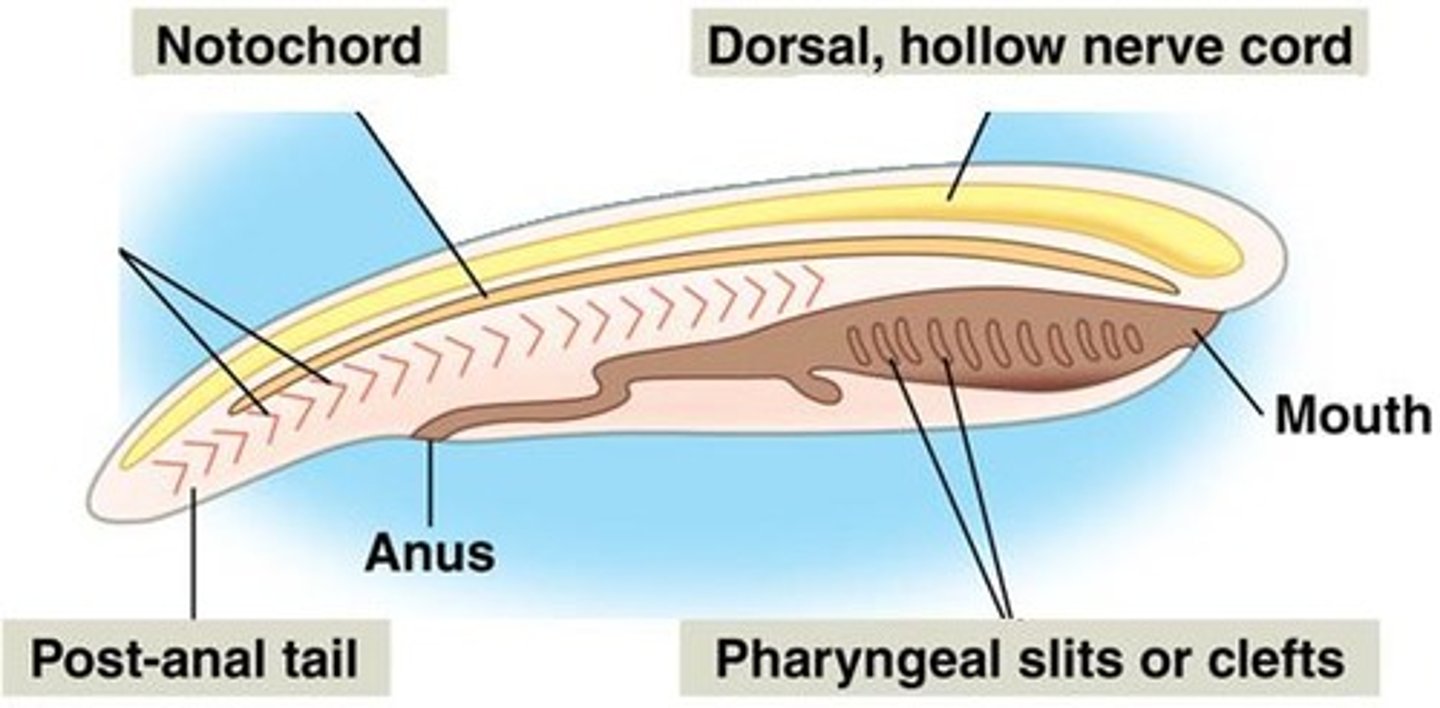
Post-anal tail
Tail extending beyond the anus for balance.
Cephalochordata
Lancelets retaining all chordate characteristics as adults.
Urochordata
Tunicates, marine filter feeders with larval chordate traits.
Vertebrates
Chordates with a backbone and complex structures.
Myxini
Hagfishes, jawless scavengers with rudimentary vertebrae.
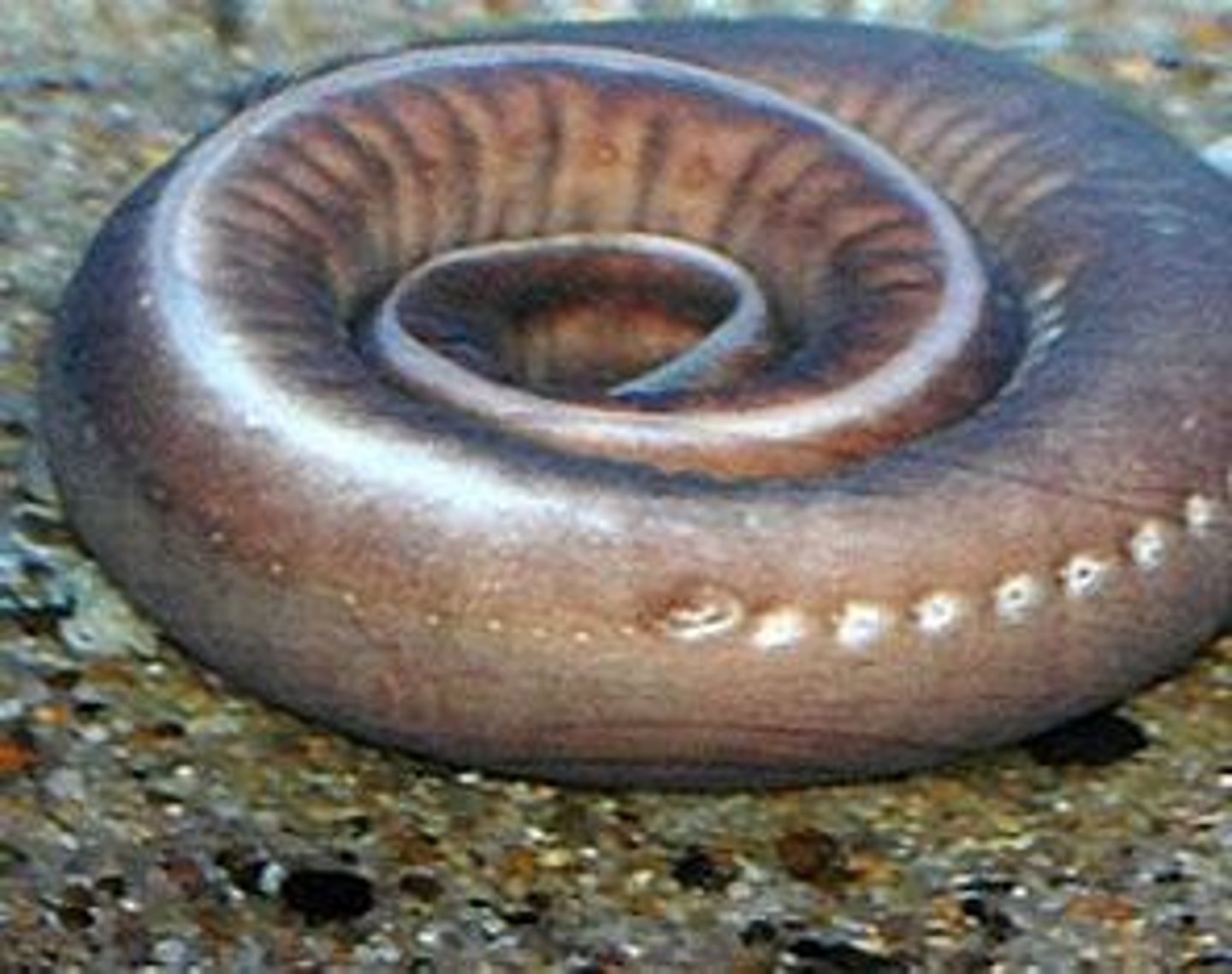
Petromyzontida
Lampreys, jawless parasites with cartilaginous skeletons.
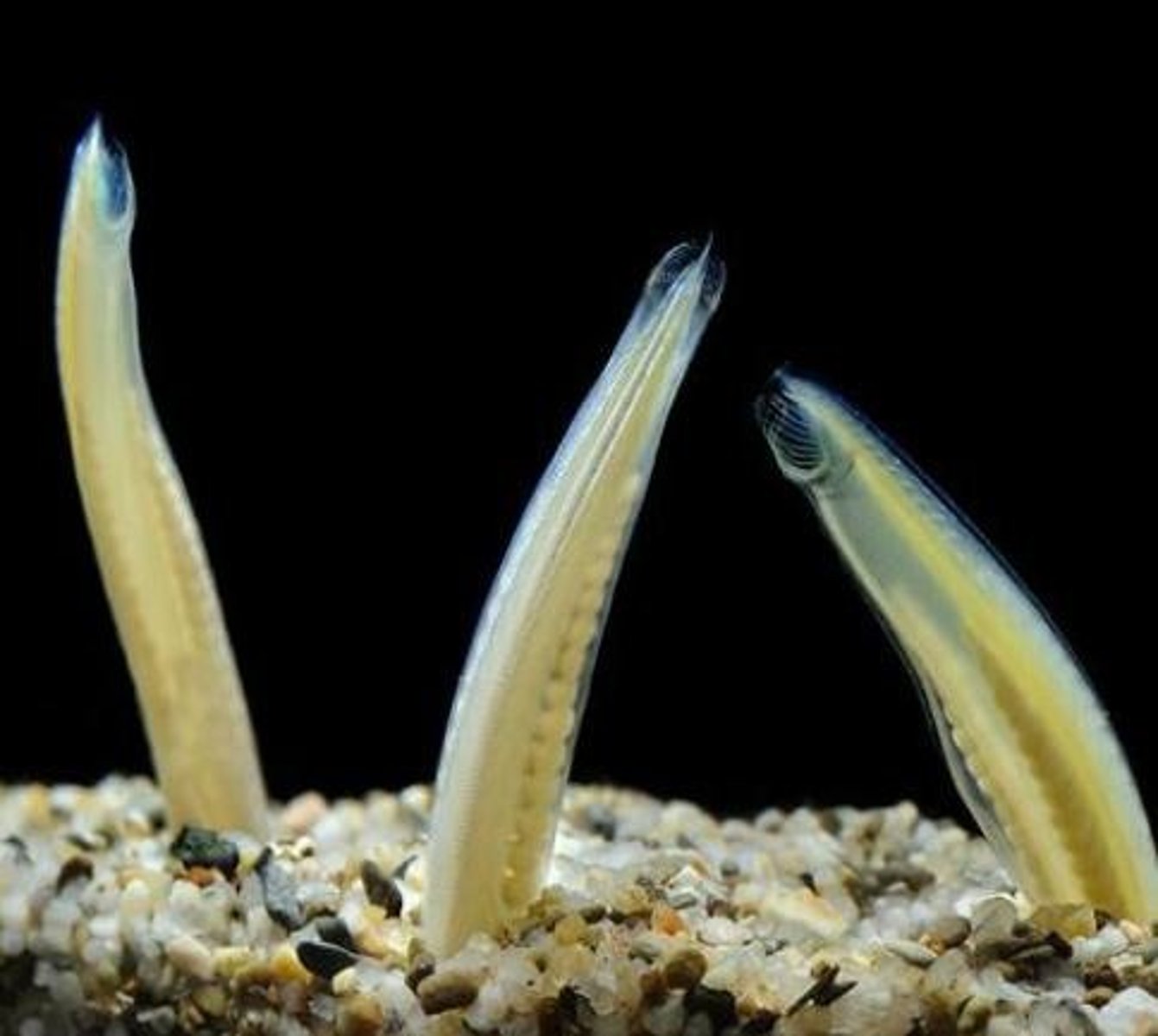
Gnathostomes
Jawed vertebrates with enhanced sensory systems.
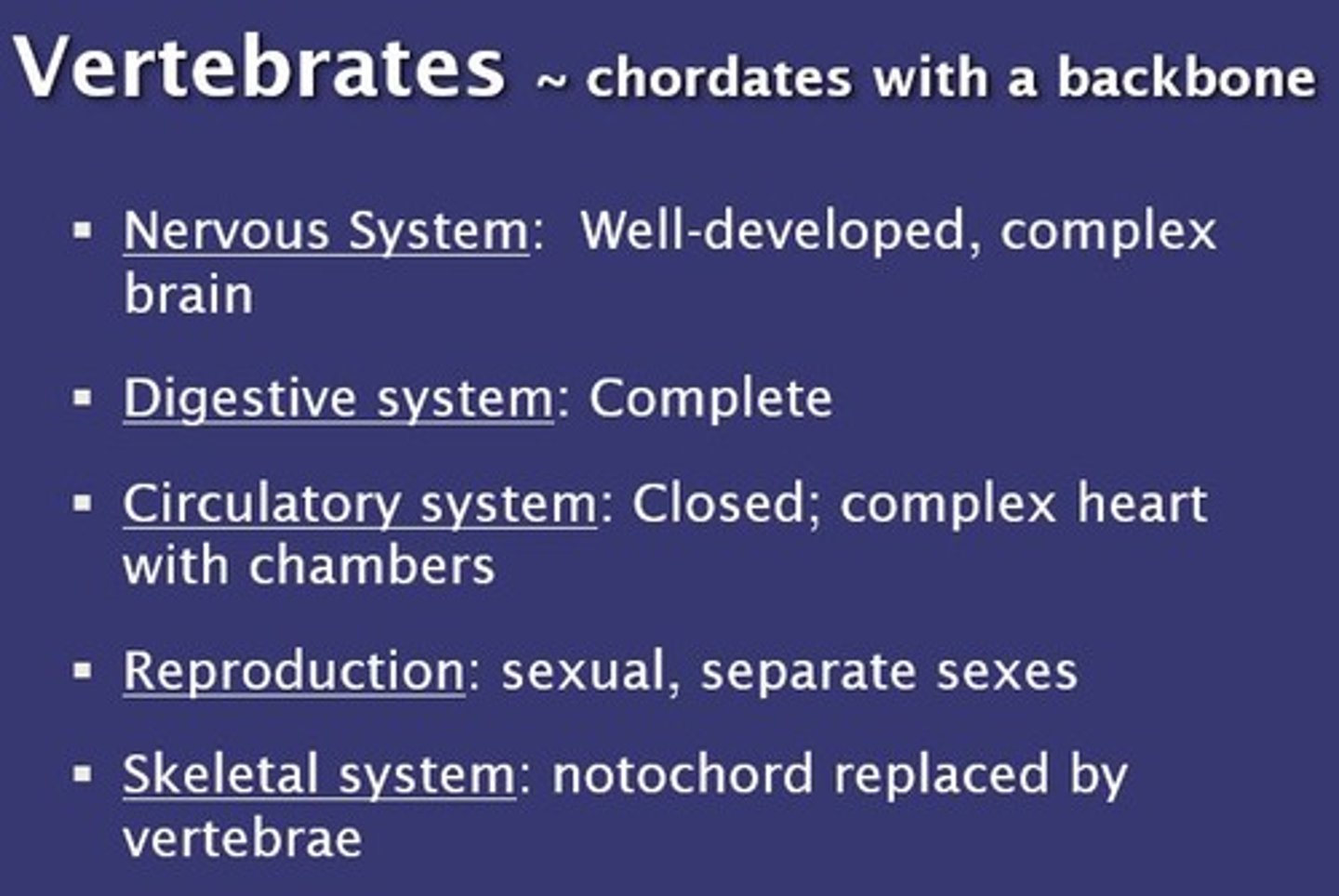
Osteichthyes
Bony fish with calcium phosphate skeletons.
Chondrichthyes
Cartilaginous fish like sharks and rays.
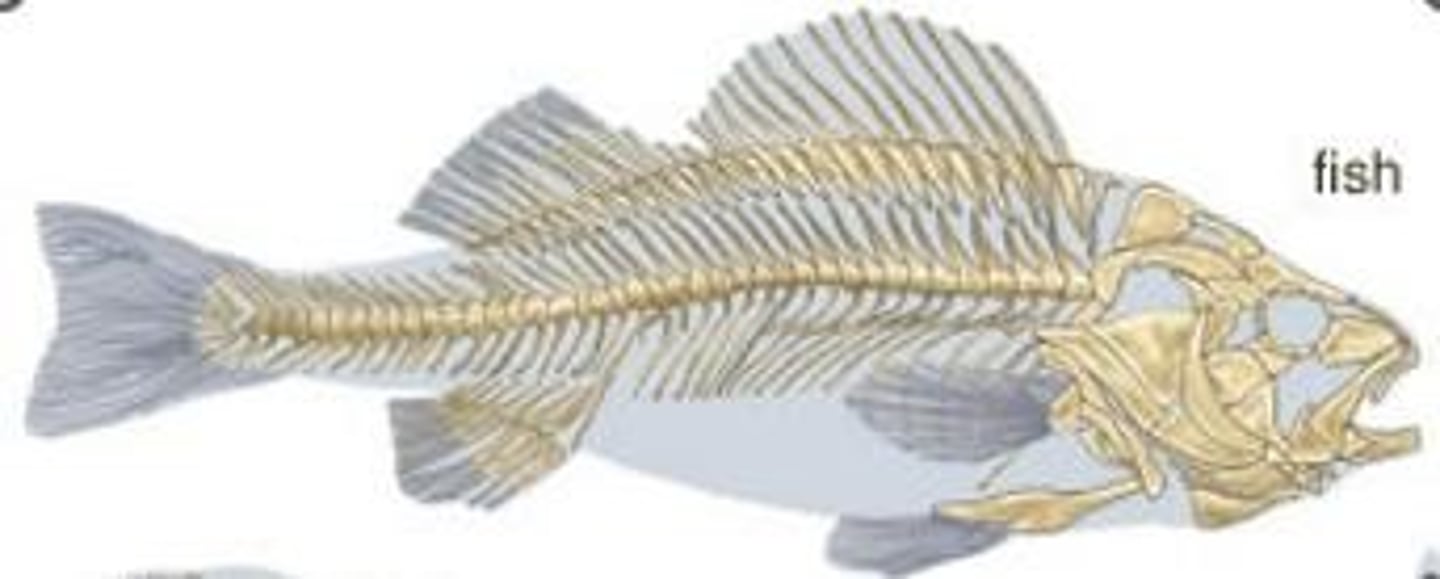
Ray-finned fish
Most diverse group of bony fish.
Lobe-finned fish
Fish with muscular fins, ancestors to tetrapods.
Tetrapods
Gnathostomes with four limbs for land movement.
Amphibia
Tetrapods requiring water for reproduction and development.
Urodela
Salamanders, amphibians with tails.
Anura
Frogs and toads, amphibians without tails.
Apoda
Caecilians, legless amphibians adapted to burrowing.
Amniotes
Tetrapods with eggs adapted for terrestrial life.
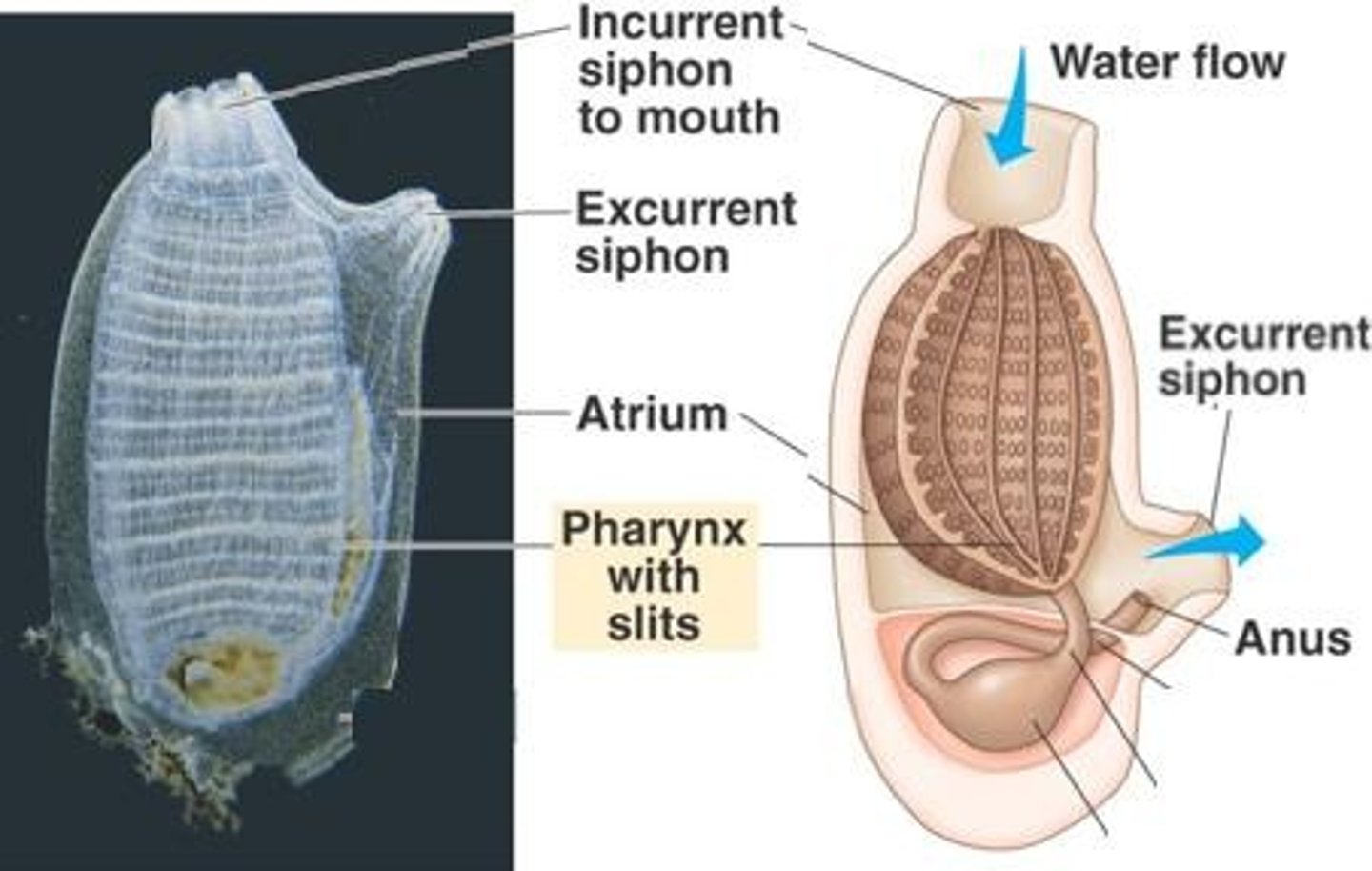
Amniotic egg
Egg with membranes protecting embryo from desiccation.
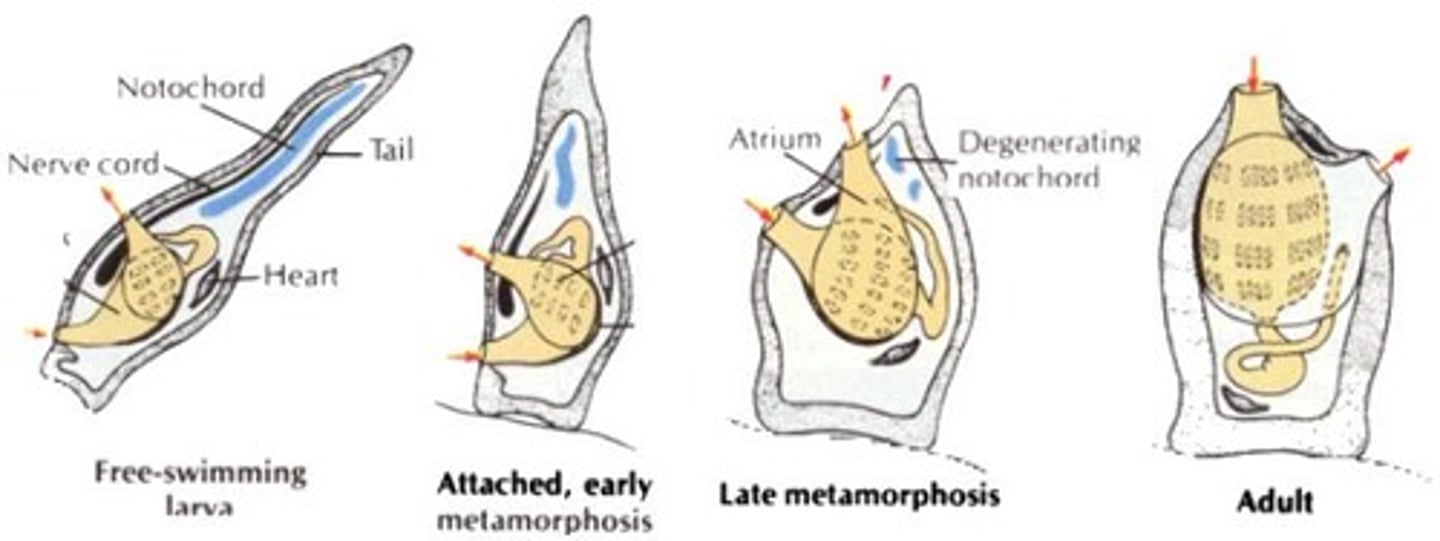
Reptilia
Reptiles, including lizards and birds, with shelled eggs.
Endothermic
Warm-blooded, using metabolism to regulate body temperature.
Mammalia
Amniotes with mammary glands and hair.
Monotremes
Egg-laying mammals like the platypus.
Marsupials
Mammals with pouch for early developmental stages.
Eutherians
Placental mammals, with prolonged embryonic development.